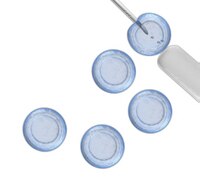SCR066 Sigma-AldrichQuantitative Alkaline Phosphatase ES Characterization Kit
This Quantitative Alkaline Phosphatase Embryonic Stem (ES) Characterization Kit easily quantifies the amount of alkaline phosphatase present within their embryonic stem cell cultures using a convenient 96-well colorimetric enzymatic assay.
More>> This Quantitative Alkaline Phosphatase Embryonic Stem (ES) Characterization Kit easily quantifies the amount of alkaline phosphatase present within their embryonic stem cell cultures using a convenient 96-well colorimetric enzymatic assay. Less<<MSDS (material safety data sheet) or SDS, CoA and CoQ, dossiers, brochures and other available documents.
Recommended Products
概述
| Replacement Information |
|---|
重要规格表
| Key Applications |
|---|
| Cult |
| References |
|---|
| Product Information | |
|---|---|
| Components |
|
| HS Code | 3822 19 90 |
| Quality Level | MQ100 |
| Physicochemical Information |
|---|
| Dimensions |
|---|
| Materials Information |
|---|
| Toxicological Information |
|---|
| Safety Information according to GHS |
|---|
| Safety Information |
|---|
| Packaging Information | |
|---|---|
| Material Size | 100 assays |
| Transport Information |
|---|
| Supplemental Information |
|---|
| Specifications |
|---|
| Global Trade Item Number | |
|---|---|
| 产品目录编号 | GTIN |
| SCR066 | 04053252660665 |
Documentation
Quantitative Alkaline Phosphatase ES Characterization Kit MSDS
| 职位 |
|---|
Quantitative Alkaline Phosphatase ES Characterization Kit 分析证书
小册子
| 标题 |
|---|
| Human Stem Cell Systems |
技术信息
| 标题 |
|---|
| A Novel Serum-free and Xeno-free Differentiation Medium for Accelerated Osteogenic Differentiation of Human Mesenchymal Stem Cells |
| Millipore Tools for Characterizing Induced Pluripotent Stem Cells |
数据表
| 标题 |
|---|
| Quantitative Alkaline Phosphatase ES Characterization Kit |
| Reprogramming Cell Fate and Function Novel Strategies for iPSC Generation, Characterization, and Differentiation |







